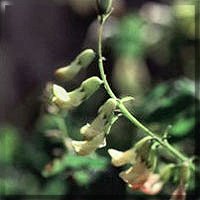

Astragalus membranaceus Astragalus centralpinus


Astragalus membranaceus
Astragalus
centralpinus
Synonyms - Beg Kei, Buck Qi, Huang Chi, Milk Vetch, Yellow Leader, Radix astragal
Origin - China, Taiwan, Korea
Part of the plant used - Roots
Edible Parts - Astragalus Membranaceus is a perennial member of the flowering legume (pea) family. It is indigenous to the northern and eastern parts of China and Mongolia. Astragalus is native to Northern China and the elevated regions of the Chinese provinces Yunnan and Sichuan. The portion of the plant used medicinally is the four to seven year old dried root collected in the spring. While there are over 2,000 types of astragalus worldwide (the natural gum tragacanth used in pharmaceuticals and textiles is obtained from Astragalus tragacanthus) the Chinese version has been extensively tested, both chemically and pharmacologically.
History - Astragalus has demonstrated striking results in stimulating the immune system. In fact it is one of the most powerful immune system boosters known. Also known as Radix astragali, "Yellow Leader," – or as part of a Chinese herbal mixture called qiang gan ruan jian tang – astragalus is recognized in traditional Chinese medicine for its importance as a tonic herb. First recorded in a herbal text over 2,000 years ago, and still one of the most popular herbs in China, astragalus is prized for its ability to increase ch’i (qi), or "wind energy." This, in turn, helps to overcome fatigue, to control diabetes, to lower blood pressure and to treat coronary heart disease and anemia. Astragalus’s properties include antiviral, antibacterial, immunostimulatory response, anti-inflammatory and energy tonic. It promotes drainage of abscesses and cysts.
Some studies on the effects of astragalus in cancer treatment have been very promising, and it is one of the principal herbs being studied by scientists at the American Cancer Society. Research has shown that Astragalus is valuable in strengthening the immune systems of cancer patients. Those who are receiving chemotherapy or radiation have been shown to recover faster and for longer periods when they take astragalus during treatment.
Pharmacology - Astragalus contains a unique isoflavone, termed 4' hydroxy-3'-methoxyisoflavone 7-sug which has some pharmacological activities on digestion. Other ingredients of Astragalus include the triterpenoid saponins (Astragalosides, astramem-brannins) which are analogous to the animal steroid hormones. Also important in astragalus are the numerous polysaccharides which have shown in pharmacological experiments to enhance the activity of the immune system, particularly NK and T-cell function and increased interferon production.
Therapeutic Properties - It is believed to be a galactagogue (increases lactation), The herb has a sweet taste and has been used in traditional medicine as an immune system, lung, liver and spleen stimulator. It also stimulates the circulatory system and acts as a heart tonic. Beneficial effects of lowering high blood pressure and blood glucose levels have also been reported. It is used to:
Dosage - A popular way to prepare astragalus is to put one teaspoon of the root into 1-1/2 pints of water in a covered container, and slowly boil for 20 to 30 minutes. Allow to cool slowly in the container, keeping it covered. Drink one cup at a time, twice daily.
Toxitity, Cautions & Cotraindications - None known